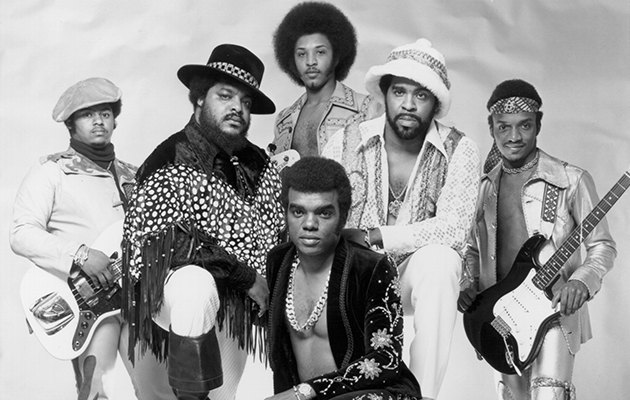Originally published in Uncut's September 2015 issue (Take 220) "Harvest For The World’ refers to a peaceful gathering,” explains songwriter Ernie Isley, “where every human being is invited, and where no-one will be hindered in any way from participating.” Originally a vocal trio comprisin...
JASPER: We did this one in Los Angeles – 3+3 was when we started to go to LA, and the main reason we went out there was because Malcolm Cecil had this Tonto synthesiser that he’d built. Stevie Wonder had used it and we wanted to use it too, particularly me. Malcolm was kind of a genius with electronics. The first time I heard someone use it was Stevie Wonder on Music Of My Mind, and it was so unusual at the time. For me, it was groundbreaking for keyboard players, because before that time people weren’t using it in that way. I think it made a lot of people in the industry curious.
MARGOULEFF: O’Kelly ran the group like a military operation. If one of the boys was late to the studio, they knew about it! Inside the group, it was like a police state. But they took care of us promptly – after one of the albums we worked on, O’Kelly and Marvin came into our office with a briefcase, they opened it up and inside there were hundreds of dollars, neatly stacked. Completely like something out of James Bond! They opened it up and said, “How much do we owe you?” It was something like $20,000 to do the job, and they paid us in cash. It was the one and only time I’ve ever been paid like that. I’ll never forget it.
JASPER: I think we did the music for “Harvest…” in one afternoon. Ernie played the drums, I played the keyboard, Marvin played the bass. That’s how we laid down the original track, and then Ernie overdubbed the guitar part. Then we made sure that the lyrics were OK, and did a guide vocal or two. Then maybe the next day we finished it off with the vocals. And that’s only because we were well-rehearsed. Everybody knew what they were going to play on the basic track. Drums, guitar, keyboards, bass – everybody was sure, so it was just a matter of getting the right take.
CECIL: Ernie was doing a lot of playing. We’d record the rhythm section first. Then Jasper would play any synthesiser parts. But normally we’d put down the basic rhythm track and then overdub the other instruments and the vocals, and then put the background vocals on, usually last.
ISLEY: In the studio, I didn’t take a break, I didn’t sit back and have a chocolate malt and a burger, I’d get back out there and play. After the drums, I’d do the lead guitar or an acoustic guitar.
MARGOULEFF: Ernie was always jumping all over the place – the guy’s a total musician. He’s a really great guitar player, and he really got some good coaching from Jimi Hendrix.
CECIL: Jimi had met Ernie when he was just a child because Jimi played for two years with the Isleys, and I think he lived in O’Kelly’s house or their parents’ house for a couple of years. So Jimi was a big influence on Ernie. Jimi had once said to him, “You watch what I’m doing, I’ll show you what I’m doing, because one of these days you’ll be playing guitar with your brothers!” Which was prophetic at the time.
ISLEY: There’s a lot of 12-string acoustic guitar across that record, which brought a whole other flavour to the songs and made it real distinctive. It adds a really nice flavour.



